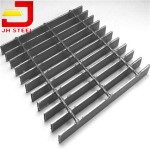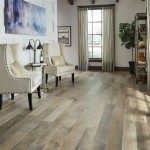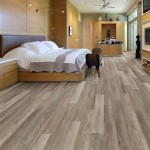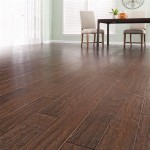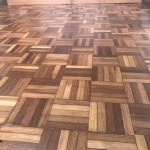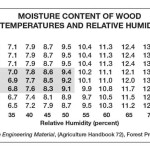Understanding the Size of Solid Hardwood Flooring: A Comprehensive Guide
Solid hardwood flooring, renowned for its durability, aesthetic appeal, and timeless elegance, remains a popular choice for residential and commercial spaces. A crucial factor to consider when selecting solid hardwood flooring is its size, encompassing thickness, width, and length. These dimensions not only influence the floor's structural integrity and visual impact but also affect installation ease and overall cost. A thorough understanding of these size parameters will enable informed decisions that align with specific project requirements and aesthetic preferences.
The dimensions of solid hardwood flooring are typically expressed in inches or millimeters. Thickness, often measured in inches, directly correlates with the floor's ability to withstand wear and tear and its capacity to be sanded and refinished multiple times. Width, also measured in inches, dictates the visual effect of the floor, influencing the perceived spaciousness of the room. Length, often varying within a shipment, contributes to the overall pattern and aesthetic appeal of the installed floor. Variations in length create a more natural and less repetitive look.
Thickness Considerations for Solid Hardwood Flooring
Thickness is arguably the most critical dimension of solid hardwood flooring, directly impacting its longevity and performance. Common thicknesses range from ¾ inch (19mm) to 5/16 inch (8mm), although thicker options are available for specialized applications. The choice of thickness should be guided by factors such as the subfloor condition, the anticipated level of foot traffic, and the desired lifespan of the floor.
A ¾-inch (19mm) thickness is the industry standard for solid hardwood flooring and offers optimal durability and stability. This thickness provides ample material for multiple sanding and refinishing sessions, extending the floor's lifespan and maintaining its aesthetic appeal. It is suitable for most residential applications and can withstand heavy foot traffic. However, installing ¾-inch solid hardwood requires a structurally sound and level subfloor to prevent movement and potential squeaking.
Thinner options, such as 5/16-inch (8mm), are often chosen for installations where height is a constraint, such as when matching existing flooring levels or avoiding interference with doors. While more economical, thinner hardwood flooring provides less material for sanding and refinishing, potentially limiting its lifespan. Furthermore, thinner planks may be more susceptible to cupping or warping if exposed to excessive moisture or uneven subfloors. A very level subfloor becomes even more important when using thinner hardwood.
For particularly demanding applications, thicker solid hardwood flooring may be specified. These thicker options, often exceeding ¾ inch, provide enhanced stability and durability, making them suitable for high-traffic commercial environments or areas subject to significant loads. They also offer the greatest potential for sanding and refinishing, ensuring long-term performance and aesthetic appeal. However, these thicker options are typically more expensive and require careful consideration of subfloor preparation and installation techniques.
Width Variations and Their Visual Impact
The width of solid hardwood flooring significantly influences the aesthetics of a room. Narrow planks, typically ranging from 2 ¼ inches to 3 ¼ inches, create a traditional and formal appearance. Wider planks, extending from 5 inches to over 10 inches, impart a more contemporary and open feel. The choice of width should complement the room's size, style, and existing architectural features.
Narrow planks are often chosen for smaller rooms, as they can create a sense of visual complexity and detail without overwhelming the space. They are also well-suited for traditional or formal settings, where their classic appearance complements existing décor. Narrower planks tend to be more stable than wider planks, as they are less susceptible to cupping or warping due to moisture fluctuations. This increased stability can be an advantage in environments with varying humidity levels.
Wider planks, on the other hand, create a more expansive and modern aesthetic. They are particularly effective in larger rooms, where they can visually enlarge the space and create a sense of openness. Wider planks showcase the natural grain patterns of the wood more prominently, adding character and visual interest to the floor. However, wider planks are more prone to movement due to changes in humidity, requiring careful acclimatization and installation techniques to minimize potential issues.
Mixing plank widths within an installation is another option to consider. This technique, often referred to as random width flooring, creates a more natural and less uniform appearance. Mixing widths adds visual interest and can mimic the look of antique or reclaimed flooring. It also helps to minimize the appearance of any minor imperfections in the subfloor. This approach requires careful planning and execution to ensure a balanced and aesthetically pleasing result.
Length Considerations and Installation Patterns
The length of solid hardwood flooring planks also contributes to the overall aesthetic appeal and installation process. Solid hardwood flooring is typically sold in random lengths, ranging from 1 foot to 8 feet or more. This variation in length allows for a more natural and less repetitive appearance, as compared to using all planks of the same length. The average length of the planks can also influence the overall cost, with longer average lengths often commanding a higher price.
Random lengths allow for a more staggered and visually appealing installation pattern. By varying the lengths of adjacent planks, installers can minimize the appearance of seams and create a more seamless and natural look. This approach also reduces waste, as shorter pieces can be used to fill in gaps and minimize the need for cutting longer planks. When installing random length hardwood, it is important to distribute the different lengths evenly throughout the room to avoid creating noticeable patterns or clusters of short or long planks.
Specific length considerations also arise when planning particular installation patterns. For example, herringbone and chevron patterns require precise cutting and alignment of planks, and achieving these patterns may necessitate the use of specific lengths. Similarly, certain border designs or decorative inlays may require planks of specific lengths to achieve the desired effect. Careful planning and coordination between the installer and the flooring supplier are essential to ensure that the appropriate lengths are available for the chosen installation pattern.
Longer planks, especially in wider widths, can be helpful in creating a sense of spaciousness and minimizing the number of visible seams. However, longer planks are also more susceptible to movement due to changes in humidity and may require more careful acclimatization and installation techniques. Short planks, while often less expensive, can create a more choppy or busy appearance if not used carefully. Strategically placing them in closets or under furniture can be a good way to utilize them effectively.
Acclimatization is a critical step regardless of the plank length chosen. Solid hardwood flooring needs time to adjust to the environment in which it will be installed. This process helps to minimize movement after installation and prevents issues such as cupping or warping. The acclimatization period can vary depending on the species of wood, the moisture content of the subfloor, and the ambient humidity levels. Following the manufacturer's recommendations for acclimatization is essential for a successful installation.
Beyond the technical aspects of size, the aesthetic considerations are paramount. The interplay of thickness, width, and length determines the final visual impact of the floor. The choice should consider the overall style of the space, the existing furnishings, and the desired atmosphere. For example, a rustic design might favor wider planks with varying lengths, while a contemporary setting might benefit from narrower planks with a more uniform appearance. Understanding the nuances of these dimensions allows informed choices, ensuring a solid hardwood floor that is both beautiful and durable.

Engineered Wood Flooring Size Guide Bvg

Average Hardwood Flooring S In 2024 Forbes Home

Standard Narrow Or Wide Solid Wood Flooring Jg Solihull

Wide Or Narrow Wood Flooring Direct

Hardwood Vs Engineered Wood Flooring Which Is Best For You Forbes Home

Allen Roth Natural Oak 3 1 4 In W X T Varying Length Smooth Traditional Solid Hardwood Flooring 27 Sq Ft Carton The Department At Com

Solid Vs Engineered Wood Floors Key Differences Carlisle Wide Plank

Bruce Sample Frisco Fawn Oak Solid Smooth Traditional Hardwood Flooring In The Samples Department At Com

Bruce America S Best Choice Gunstock Oak 2 1 4 In W X 3 T 84 Smooth Traditional Solid Hardwood Flooring 20 Sq Ft Carton The Department At Com

Bellawood 3 4 In Millrun White Oak Solid Hardwood Flooring 2 25 Wide Ll
Related Posts


